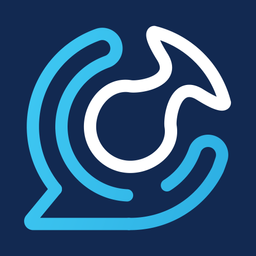It's 2 AM, and I'm typing my name into Perplexity to see what AI thinks about me.
A tidy biography came out: founder, education, some stats, maybe a few guesses that felt close enough to be dangerous. It was both me and not me. Kind of like a mirror that showed an older haircut.

Why AI makes non-traditional analysis easier
You can make AI do a kind of analysis consultants tend to bill for with companies. But instead of doing it for McKinsey, you can run it on a person, like yourself.
Analysis is pattern plus pressure. AI is good at both. Where a human analyst needs weeks of documents and calls, a model can sweep public artifacts in minutes and draft a point of view you can stress-test. It’s not perfect but it’s promptable. That means you can get points of view on yourself that you might find hard to hear.
Strategy playbooks lean on a small set of lenses: SWOT to map internal reality, PESTLE to scan the horizon, Porter to size the fight. They work because they compress chaos and different bits of information we might not think about. They also work because they demand receipts.
You are a tiny firm with one product and a runway made of time. Your brand is your proof. Your ops are your habits. Your moat, if you’ve got one, is a loop you can run faster than the market can copy. Put that in a model’s mouth and it will give you the map. Honestly super useful.
A clean, evidence-linked, potentially hurtful self-diagnosis
Whenever I'm building a tool that analyzes a lead or a client, I look at non-traditional methods of analyzing them. For example, I would do a SWOT analysis on the person to know how to approach them.

What is the breakdown of a SWOT analysis?
Strengths, Weaknesses, Opportunities, Threats.
You're looking in a SWOT analysis at the internal advantages, or resources, or capabilities that give a product or company a competitive edge. You're looking in the Weaknesses about the internal limitations that could hinder said performance. Opportunities are external trends or market shifts that can be used for growth, and Threats tends to match external risks, competition, or things that can negatively impact outcomes.
It's usually used for corporate strategy, or marketing plans or business related things. But it's also very useful if you're looking at doing it for a person. It's just harder when you're trying to do it on yourself.
How about a PESTLE analysis?
PESTLE analysis looks at the macro-environmental factors that can influence an organization. But what if the org is you?
In that case, it's going to be an analysis about Political influences (not who you voted for) like governmental policies, regulations, restrictions etc. The next letter, E, focuses on the Economic stuff. Growth trends, inflation, consumer confidence. S stands for Social. Demographics, cultural attitudes, education...
The T in PESTLE aims at technology. What innovation is being made or adoption of emerging technologies. L stands for Legal, so consumer protection, intellectual property, labor laws etc. And E is Environmental. Environmental wouldn't really apply to a person, but tends to look at sustainability concerns like climate change, resource availability, or ecological impact that affects a company.

How PESTLE works on a person
A personal PESTLE sounds grand–it isn’t. It’s a checklist that keeps you from missing the obvious while you chase the exciting.
For example, Politics or Legal (P or L). Visas, licensing, labor rules, AI policy. If your right to work depends on a stamp, that’s strategy. If your product touches regulated data, that’s strategy. Ask for a two-column view: constraints you must respect and loopholes you can lawfully use.
Economics and Tech (E and T). Hiring cycles breathe. Wage trends signal where the heat is. Capability curves tell you which tasks a model will eat next. I can prompt for leading indicators and translate them into timing: build now, wait six months, or never touch.
Social and Environmental (The S and E). Demographics shift the floor. Remote norms change the ceiling. ESG niches are not just virtue–they are procurement shortcuts if you meet a buyer’s mandate. Have the model list social tailwinds and headwinds for your specific offer, then name one behavior you’ll change this quarter.
What about Porter's Five Forces?
Porter's Five Forces looks at the following things:
- Threat of new entrants - How easy or hard it is for new players to enter a market and challenge incumbents.
- Bargaining power of suppliers - What is the influence suppliers have over prices, or quality, or supply terms.
- Bargaining power of buyers - What leverage does customers have to demand better quality, prices, or more services
- Threat of substitute services - What is the risk that alternatives can replace or reduce demand for existing services
- Industry rivalry - How intense is competition amongst existing competitors in the market.
This stuff is used to assess the attractiveness of an industry, where profitability pressure comes from, what is the strategy one must use, for example differentiation, leadership, or marketing positioning.

How can we make this fun?
I mentioned in the beginning about using this stuff for potential leads. I've used it before, for example with the following automation. What the automation does is look at who's signing up for a calendar signup, lets say I'm at an event and I'm handing out my calendar QR code to event goers for a talk.
I don't have enough time to do a full BDR breakdown on who they are, where they are at, how much money did their company raise. But what I can do is do different analysis on the signup, make a dossier, and read it before a meeting like a Cliff Notes.

In the automation it looks if a signup is with a company email or personal email. If company, researches the company, researches the person at said company, and lets me know the important things.

AI is incredibly useful. But while people are chasing on how to build existing systems with AI better, it's worth looking at existing methodologies and seeing how they can be applied to non-traditional things. That can be then used to provide insights in ways that might not have been as easily available years ago.
So now instead of Googling your name at 2 am, ask AI to do a SWOT or TOWS analysis on yourself.
Sources
Pepperdine University Libraries. (2024, August 22). SWOT analysis – Business. Pepperdine University Libraries. https://researchguides.pepperdine.edu/industry-and-company-research
Hayes, A. (2023, July 19). Porter’s 5 Forces vs. SWOT: What’s the difference? Investopedia. https://www.investopedia.com/ask/answers/043015/whats-difference-between-porters-5-forces-and-swot.asp
Chaffey, D. (2023, July 19). What is TOWS analysis? Smart Insights. https://www.smartinsights.com/marketing-planning/create-a-marketing-plan/what-is-tows-analysis/
National Institute of Standards and Technology. (2023). Artificial Intelligence Risk Management Framework (AI RMF 1.0) (NIST AI 100-1). https://nvlpubs.nist.gov/nistpubs/ai/nist.ai.100-1.pdf


